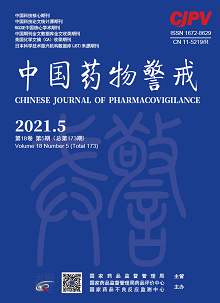|
|
Chronic Toxicity of Xuezhining Pill on Normal Rats
Guo Xin, HUANG Nana, Sun Rong
2021, 18(5):
433-437.
DOI: 10.19803/j.1672-8629.2021.05.07
Objective To observe the toxicity of Xuezhining pill to normal rats, the main manifestations, involved organs and the recovery after drug withdrawal, so as to provide a toxicological basis for clinical safety administration. Methods With reference to Technical Guidelines for the Study of Chronic Toxicity of Traditional Chinese Medicine and Natural Medicine, general conditions such as weight, daily diet and daily water intake of rats were observed after 90 days of continuous administration and 45 days after drug withdrawal. 24 hours after the last administration, 10 rats were randomly selected from each group to take blood samples for routine blood test and blood biochemical test. After taking blood, the rats were killed and dissected, and the organs such as heart, liver, spleen, lung, kidney, adrenal gland, thymus, uterus, ovary, brain, stomach, small intestine, thymus, epididymis, colon and rectum were weighed. The ratio of viscera to brain was calculated except intestine, and the organs were examined by histopathology. Results During the experiment, no rats in each group died. After continuous administration for 90 days, compared with the normal group, the weight of rats in each group increased slowly (P>0.05). MCV, RET, HCT, PT and MCH in high dose group were significantly decreased (P<0.01). MCH increased significantly (P<0.01) and RET decreased significantly (P<0.01) in middle dose group. RET in low dose group decreased significantly (P<0.01). In high dose group, ALT and ALP increased significantly (P<0.001), TG decreased significantly (P<0.001), AST, BUN, Cr and ALB increased significantly (P<0.01), T-CHO decreased significantly (P<0.01) and Cl- decreased significantly (P<0.05). The ALP in low dose group increased significantly (P<0.01). There was no statistical difference between other biochemical indexes and normal group (P>0.05), and the pathological examination of each organ had no obvious abnormality. After stopping the drug, all indexes could return to normal. Conclusion After 90 days of continuous administration of 7.5~15.0 g/kg (equivalent to 35~70 times of clinical daily dosage of 70 kg), Xuezhining pill can increase the indexes of liver and renal function in rats, which can return to normal after 45 days of drug withdrawal.
References |
Related Articles |
Metrics
|
